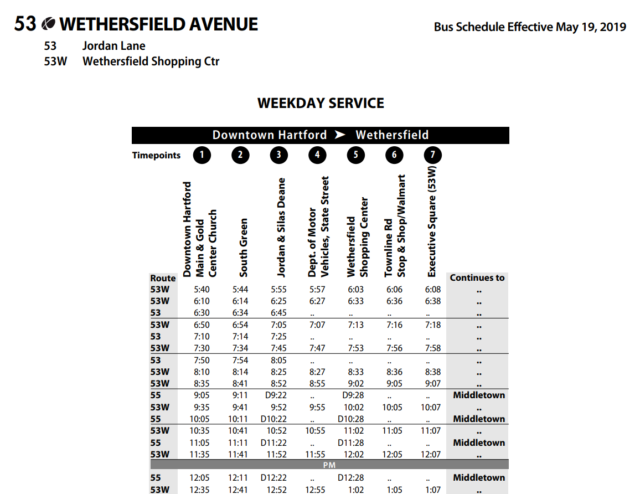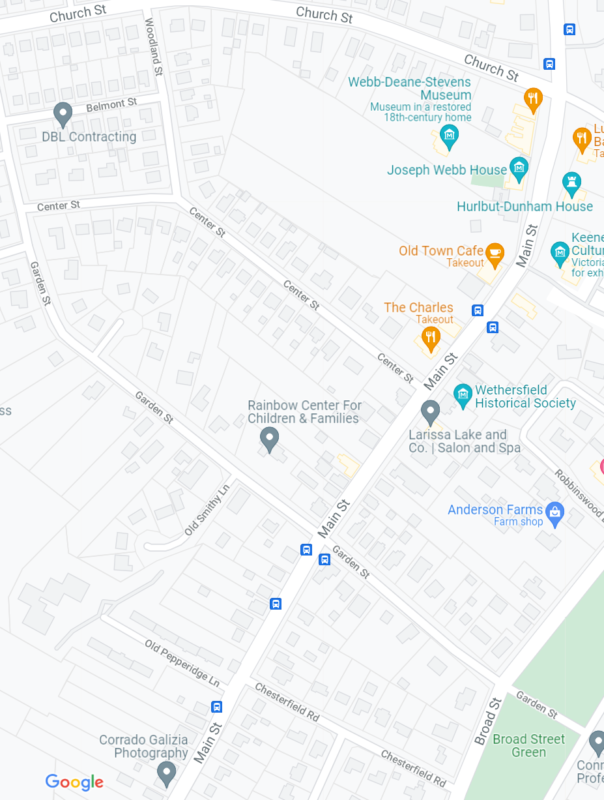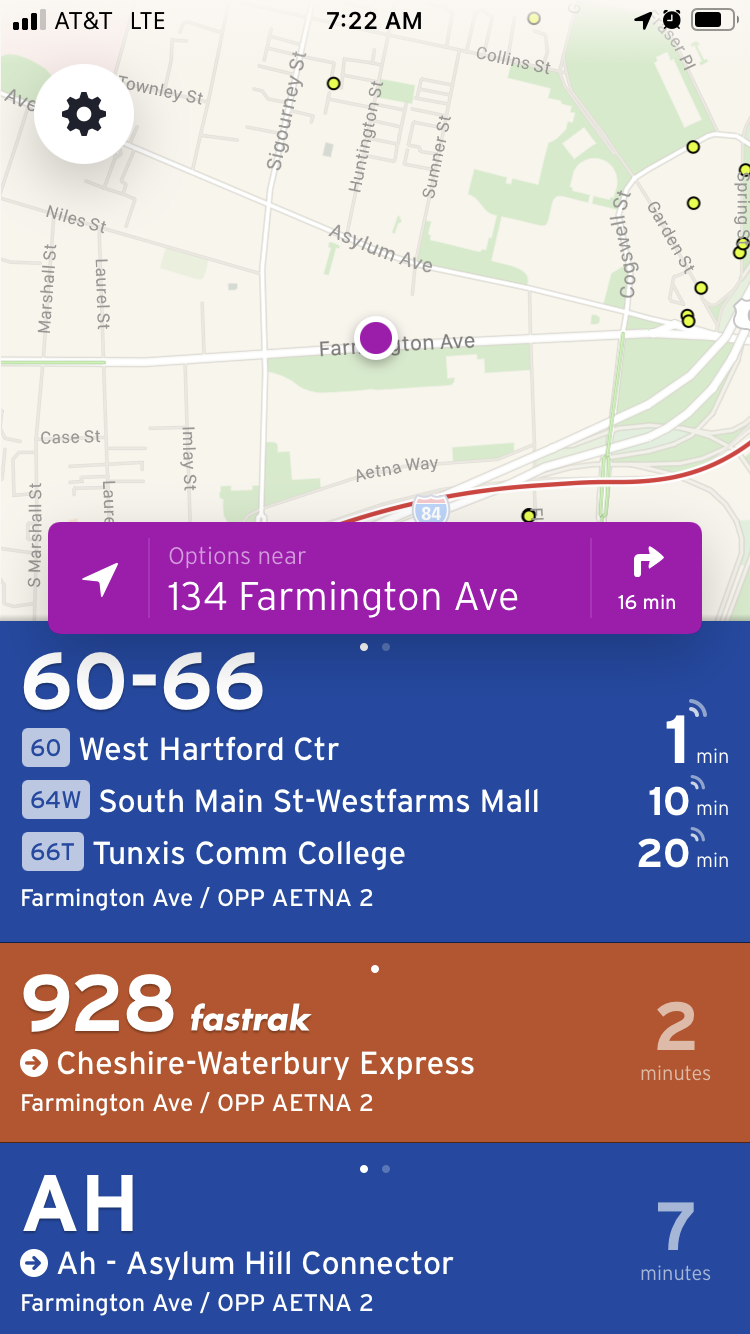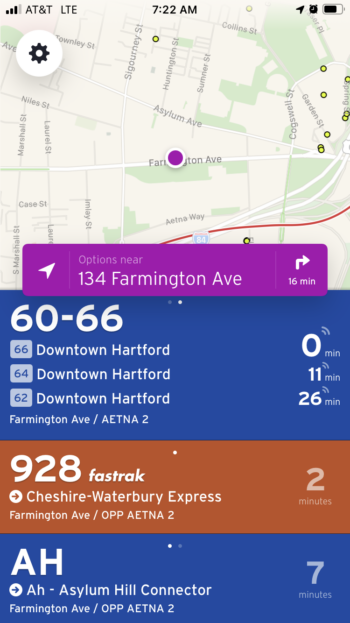This series will provide guidance and answer questions so that those who want to do meaningful work in healing the planet can begin living their values through choosing to be car-free or car-lite. So far, it’s been established that mobility is possible in the rain without wearing a car like a rain jacket, and, that it is totally possible to feed oneself without spending $12,000 per year on a personal vehicle. You can access parks and recreation by bus, bike, or on foot. And now…a little about how to get to the place that enables those groceries in the first place.
Every day since March 2020 has felt like an “I told you so” to the bosses who prior to this refused to give employees the option to work remotely. As it turns out, many jobs can be done well — even better than before — without workers putting on pants and leaving the house.
For those who still must travel, it’s not hard to do so in ways other than cars.
If you lived on a college campus, chances are, you walked from dorm to classes. That could have easily been a 15 minute trip, longer probably, if walking and talking with friends. You did that while carrying five textbooks. You did not demand a shower upon arriving. This was all normal behavior, and if you’re wondering why it was easier to make friends during that time, just look to how every day you had built in opportunities for socializing. You don’t meet new people when behind the wheel of a car unless you rear-end someone. (Whether that’s a better or worse way to meet people than via dating app remains to be seen)
Unlike college classes, you are likely only commuting to and from one job site. Your lunch is probably the heaviest thing you are toting. You may even have more flexibility about what time you arrive.
If you’ve done this all before, why the tsuris?
TIME
Start by figuring out what time you need to arrive, and work backwards. You have more control over time if walking or biking, but commonsense says to still add a buffer in case you hit every red light, find yourself at an intersection with a broken pedestrian light during rush hour, run into a friend walking her dog. Occasionally there is a surprise construction zone. But here in Connecticut, you may have 99 problems, but pedestrian traffic jams ain’t one.
There is a stigma around being car-free, one that needlessly creeps into job ads. The assumption, often, is that if a person does not have access to a private vehicle, then she will be late to work. But from my observations and experiences, those of us who are car-free make every effort to arrive on time — often being early or leaving later because of the bus schedule — and receive no credit for it. Meanwhile, our car-owning peers get a pass when they are late or out because of “car trouble” or “traffic.” This is a huge piece of hypocrisy that once you notice, you can’t unsee. Being on time is not a challenge if you are someone who budgets her time wisely.
For those considering the bus, note that what is listed on the schedule is like the goal time, but checking the Transit app tells you how things are really going. Most buses seem to run within a minute or two of the projected time; there are exceptions.
A few tips for total newbies:
The bus schedule does not list times for every single stop. Only major points-of-interest are listed.

Let’s imagine you work somewhere in Old Wethersfield after the DMV, but before the Wethersfield Shopping Center. If you need to be at your desk by 9 AM, you have an option that gets you there a little early, and one where you are probably a few minutes late. In either case, if you live in Downtown Hartford, you need to be at the bus stop by either 8:10 or 8:35. That’s when the bus is scheduled to board. Arrive a few minutes early unless you love being the person chasing after a bus. If you’re all about drama, then own it and go run after that bus with a flourish. When you get on, make sure you loudly greet all your fellow passengers. Take a bow.
How do you know where there is a bus stop near your job? The old school way is just to look around for a blue bus stop sign. What’s quicker is to open up Google Maps and zoom in until you see the little blue and white bus squares. From this, you can see that there is a designated bus stop on just about every block in this section of Old Wethersfield. Once you know where a stop allegedly is, you can verify the sign in person, if you feel the need. When in Google Maps, you can hover over the bus icon and it will tell you which bus route(s) serve(s) it.

The benefit of using the Transit app is that you can quickly find out what other buses — if any — serve the area. It tells you if there are no more buses running for the day. You can use the app outside of Greater Hartford. It will give you the time schedule for the closest bus stop, whether it’s a major one or not. Make sure the time you are looking at is for the direction you want to go in. Are you inbound or outbound? Fix by swiping to the side:

-

You figured out what time you need to be at the bus stop, so then do the math on how long it takes for you to walk or bike to that stop. This sounds like a giant pain, all of this, but since you’re doing this for work, you only need to figure it out once (assuming you have a static work schedule). Write it down somewhere if you can’t commit it to memory. Really. You don’t need to look this up every day.
The one other thing — know where the stop is before yours. You pull the cord after the bus leaves that previous stop. (I know this is basic, but some people don’t know and you can’t be requesting a stop at the last minute because either you’ll be ignored or the driver will slam hard on those brakes and your fellow passengers will hate you for the whiplash) You could also let the driver know where you’re going, and most do try to be helpful, but it feels like a lot to ask when they are already navigating traffic on your behalf and doing so during rush hour. An alternative for the very nervous: do a trial run on the weekend, if bus service is available on that route. Most local routes have stops every few blocks; if you miss your stop, it won’t ruin your entire day.
ROUTES
Biking or walking? You might pick a route that’s longer to avoid unpleasantness if you have low tolerance for irritation with rush hour driving. My most direct route home is filled with noisy cars being driven too fast, and I take other roads on days when I am not in a rush or have no energy for car chaos.
Trying out the bike for the first time? I would suggest doing that trial run on the weekend when there are fewer people driving, even if only to get familiar with where there are chronic potholes, tire-grabbing storm grates, and other obstacles.
If you’ve only ever driven around, look at the map to see what new potential there is for your commute. Are there any parks or cemeteries you can bike or walk through?
STORAGE AND COMMUTING EXPENSES
If your workplace provides car storage, they should have no trouble providing bicycle storage. Wheeling the bicycle indoors when no bicycle rack has been made available is absolutely reasonable. I would suggest asking a manager or HR in advance where the bike rack is if you are in a large enough workplace that it’s possible to not know where to store your bike.
While you’re feeling feisty, look to see what kinds of commuter benefits are provided by your employer. Do they provide free parking? Reimburse for mileage? Are they providing anything comparable for those walking, biking, or using public transportation? If not, take yourself down to HR and start asking questions. Bring along examples of workplaces that do this, in case it’s merely a lack of imagination at work.
COMFORT
Everyone’s body works differently, but if you are commuting from within the same city where you work and you don’t act like you’re competing in some kind of race, you can probably avoid sweating profusely except during heatwaves. I’ll repeat: it’s a commute, not a race! Leave a few minutes earlier and walk or bike at a gentle pace.
Dress for the weather and for your comfort. It’s that simple.
If your comfortable clothes and footwear are radically different from what you are expected to wear at work, you might consider a new profession that’s less restrictive. I joke. Fight the system from within instead, and get the industry to change silly dress codes. This is the kind thing to do so that others also benefit.
You could bring a full or partial change of clothing with you.
If you have a desk, office, or even locker space at work, you can stash items there.
Changing clothes may be a preference, not a necessity. A two-minute stop in the restroom to re-comb your hair, apply deodorant, and maybe dab sweat off your face will probably suffice.
To be honest, if anyone is standing/sitting close enough to you to smell any possible body odor, your co-workers need to be schooled in respecting physical boundaries. For real, if you are regularly showering and maintaining personal hygiene, getting a little sweaty on your walk to work should not be a big deal. Just give yourself a few minutes to cool down before heading into a meeting.
Walking two miles or riding your bicycle for five miles is not the same level of exertion as running a marathon, nor is it the same level of stank that comes from camping out for several days. Remind yourself of this as many times as necessary. Unless you are literally a model, who cares if you’re a tad disheveled? And if you are a model, you probably have a professional makeup artist and hairstylist fixing you up anyway.
Personally, I keep a comb, deodorant, and change of clothes in my locker at work.
The clothes are for if I get drenched walking in during a rainstorm. Water from the sky does not bother me, but when drivers use their cars to splash street puddles on me, I don’t care to spend all day marinating in oily nastiness that probably contains remnants of dog poop, dead rodents, and everything else that one finds in the road.
The other two things, I rarely bother with either, but there is an occasional heatwave or gusty commute. I benefit from Middle-Aged Woman Invisibility, so frankly, it does not matter if I rolled out of the gutter or bothered to apply makeup in the first place.
I think my philosophy is coming through loud and clear: worry a lot less about shallow concerns and put more of that energy into stuff like doing your job or participating in your community or advocating for social change.
GOING HOME
If you have a human-centered workplace — congrats — you can probably leave ten minutes early (assuming you arrived ten minutes early or took that time out of your lunch hour) to catch the bus.
When designing a walking/cycling route, keep in mind that being near highway ramps at rush hour can be terrifying. You may want to pick a different route to avoid nightmare clusters where you can predict drivers will be impatient and irate. The amount of horn honking can warn you that the area is no good. All of these conditions exist in the morning, but they can work like coffee; in the afternoon, it’s like “Everyone, chill out! We get to relax now!”
The one notable difference is that for part of the year, those working the standard 9-5 shift leave work when it’s dark or getting there. If cycling, put lights on your bike — front and back. There are no similar requirements for pedestrians, though I will flip on my phone light when crossing certain intersections, aiming the light toward those in whichever lane I’m walking through at the time. Do not let the use of lights give you a false sense of security: drivers will only see these if they have their heads out of their asses. I tell myself that when I inevitably get hit by someone driving while impaired, playing on their phone, there will be video or a witness to say that I was visible, for whatever that’s worth. The other warning: someone got all defensive with me once because I used this phone light on method while crossing behind a jay-parked vehicle (SUV was parked over the sidewalk, despite there being ample room in driveway and on the street). This person thought I was recording video or taking photos. Why he was this quick to get defensive and paranoid is a conversation for another day, but as soon as I said “I wanted you to see me so you didn’t back into me” he apologized and STFU. Reflectors are also good to have, but again, only work if drivers are paying attention.
BUT WHAT IF THERE’S AN EMERGENCY AT MY KID’S SCHOOL/PARENT’S NURSING HOME/DOG’S DAYCARE?!?!?
How many days in a typical year do these emergencies arise? Be honest. How many truly require you to drop everything? Is there a co-parent, sibling, or roommate who shares this responsibility?
My grandmother never learned to drive. She raised seven children in a rural area. Maybe in her day, neighbors, friends, and relatives pitched in. Growing up, I only recall being sent home from school sick/injured twice. Once in first grade and once in ninth grade. Maybe the standards were different then than they are now.
Today, we have taxi cabs and rideshare. I have the Uber and Lyft apps on my phone, in case there is an emergency or I am somewhere after the buses stopped running and am too far (or tired) to walk/bike home. Personally, I have probably averaged one taxi/hipster-taxi ride per year.
Another option: CTRides. They can help connect you with commuting options and they have an Emergency Ride Home program.
There are plenty of parents who walk, bike, and take transit instead of using a personal vehicle. They might not be in your economic class or social circle, but that abso-fucking-lutely exist within mine.
If you are walking or biking, you don’t need to make time to hit the gym on account of having built physical fitness naturally into your day. I’ve found that a brisk 20-minute walk to work wakes me up better than coffee. There are plenty of studies that show how exercise — even walking — helps to reduce stress and improve mood, which is something to think about especially as the SAD kicks in. Keep all this in mind for when someone, unsolicited, tells you that they don’t have the time to commute any way except by personal vehicle. How we spend our time says something about our priorities.
P.S. Pack more snacks! If this is your first time using active transportation, you might not realize that even a slowpoke’s pace burns calories. Nobody needs you to be hangry at 10 AM.


Jennifer S.
When I applied to work portions of my week remotely, I requested (and was approved) being able to leave at 3:30-4 between November and January, so as to not have to bike home in the dark. I will work the last hour of the day at home.
Jim Head
This is great advice. When required to be in the office 4 days a week, I was multi-modal – a combination of running, taking the bus, and cycling. With a bike in Hartford, you’re going to get flats and there are some streets that have horrible potholes, as mentioned above. Two things to note: with a bike, you can always lock it up and come back to it later or you can bring the bike with you – all buses have bike racks (don’t forget it when you de-board – I’ve seen riders ‘forget’ and chase down the driver).
Also I learned of both goo products (slime) and tire liners. Slime sits inside the tube and fills any small holes you may get, preventing a catastrophic flat. Tire liners are an extra strip of rubber that sit inside your tires and create an added level of protection against road debris. I’m all-in on tire liners and haven’t had a flat since installing them.
In addition to google maps for bus and walking routes, I use it to find cycling routes – sometimes there are paths and cut-throughs that can turn a busy/scary commute into an off-road adventure. The photos from above can really give a better perspective on things.
Richard
Car free all my life which everyone knows by now I have never been late for work. If there is some problem, weather wise I just leave early. Funny in my years of working downtown rain nor snowstorm didn’t stop me from going to work. How many times did I walk down Park Street early in the morning along with others who were trying to get to work while those with cars had every excuse in the book as to why they couldn’t make it to work. I walked from Park Place Towers and loved every second of it. Edna walked from Dutch Point but folks with cars boohooed and stayed home. I guess Edna and I cared that there were people who had been stuck at the job for the last 24 hours and they needed to go home.
One snowstorm her and I were there for 36 hours. We had plenty of food, showers were available in the gym, took naps got paid double time, (best part napping and getting paid sticking it to the man is fun.) Give those workers a raise! Which by the way the man did when it came review time.
I just had a job interview where I told the manager, Well sir I have been working since I was 16, never drove a car, don’t even have a license and I have always come to work, I am on time and don’t cry over a snowstorm. I have a new job now weekends, it takes a ½ hour to get there walking but the crisp cool air in the morning is welcomed, I just remember to bring my spray, and large flashlight as there are coyotes and other wild animals in this neck of the woods. ( more than likely before I used the spray I would fall out)
It all can be done, and my advice is try it, learn it, just in case you have to do it someday. Of course, it’s not all roses but after awhile it will become second hand. How about just following Kerri’s advise and try it. See what its like. I will thank you; Kerri will thank you, the planet will thank you and just think when your great grandchildren ask, “where were you and what did you do?, you won’t have to tell them lies.